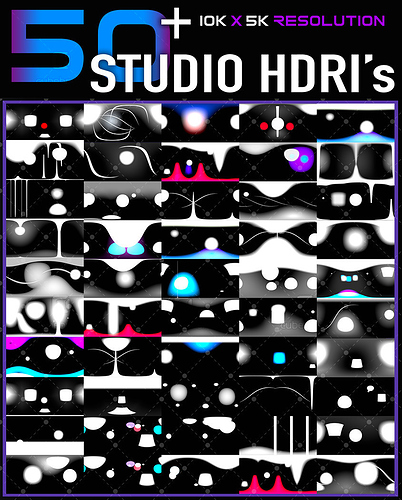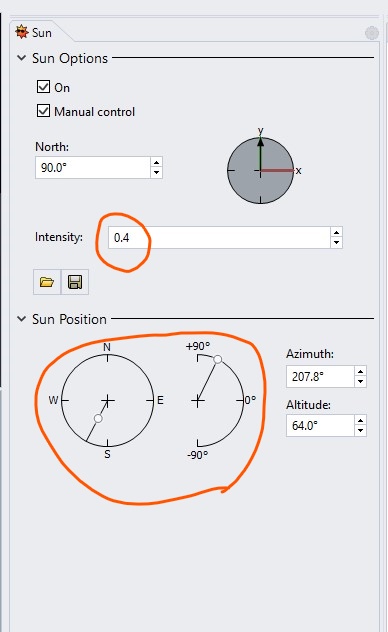Impressive renders man. Bravo! Happy to see this is possible with only Rhino 
Gorgeous stuff! Any chance you’d share screen shots of your render environment and set up?
Je suis vraiment impressionné par votre travail. Vous avez une connaissance approfondie des NURBs. S’attaquer ainsi à une carrosserie sous Rhino, il faut le vouloir. J’imagine que le confinement était intéressant… Bravo !
(ça en est jouissif d’écrire ici en français:)
McNeel should right now be throwing money at you to use those RH7 renderings as PR material. 
Great work!
with great pleasure.
first of all i downloaded these hdri images.
they are for reflection and lighting (studio style).
it cost me 16 dollars.
I’m afraid to share them, since I haven’t read the distribution and copyright rules.
here is the reflection image 
I played with these parameters to find the right angle of reflection.
it’s a matter of taste.
and one like that for the skylighting environment.
intensity 0.4 or 0.3
also sunlight. intensity 0.3 or 0.4
in short, I position the sun on an angle, where its reflection is seen on the object.
the ideal place is often in the bright area of the hdri reflection.
this adds nuances and gradients of colors on the area exposed to light
the intensity of the two lighting modes should generally not exceed 0.5 for each.
I applied a black and less reflective material for the floor and the wall.
here it is Plas mat sol.rmtl (23.0 KB)
and the car material peinture voiture.rmtl (37.7 KB)
this is the technique that I applied to make this rendering.
I could not do a lot of tests. my computer pooped while rendering
here is a small video
thank you
thank you shynn
rhino can do all …
you just have to know the fundamental beses of nurbs
lol.le confinement était un bon facteur qui m’a poussé a approfondir mes connaissance …il a été vachement bénéfique pour moi ![]()
![]()
…ça me fait plaisir d’avoir ton commentaire
en plus tu es de paris ! ça se trouve te un voisin, qui sait ! ![]()
I hope to earn money, especially if it comes from Macneel ![]()
wow Thank you so much Fares B
One of the most complete automotive surfacing I have seen to date using Rhino.
GREAT job! I can see some faults but I think it is due to wrong interpretation of the actual car rather than modeling mistake.
The most obvious mistake are the side windows. As they need to slide up and down, they should perfectly cylindrical. In fact, they are a part of torus shape!
@SINYW You’re right the windows have been modeled from non-curved surfaces, I admit that the car has some flaws. it is not really perfect . my goal was to push my abilities quickly on the single span resurfacing
my next project is to make another car with class A surfacing only with rhino7 .now has analysis tools … it’s very nice this addition from mcneel developers.
I see you were working with the PSA group !! … it’s interesting how rhino is used in your workflow … is it used to generate high quality exterior surfaces or not? …
I just watched your vid making the rim. Very nice! I picked up a few techniques! Thanks!
wow that’s great
hello fares!
do you have eny training for this? thanks.
Hi @abedi.danial
I did not watch a tutorial specifically for cars …
all I have watched in the past were the tutorials available on the net and on youtube for free .
there is the mcneel youtube channel. it has a lot of tips and techniques for modeling. i got a lot of tips from these videos. there are also a lot of channels on youtube which are good.
it is true that beyond the Nivea 2. tutorials are really rare or even non-existent. I noticed this lack.
so I decided to prepare a video tutorial to model a car from A to Z. only with rhino tools. it will be available on the tutorial sales platform. i will start doing it soon.
to know there are two books on the net which show how to model a Porsche. by alejo and an audi too. I haven’t read it to tell you more. greetings
there is another paid tutorial in french. by @Vanessa
personally I find it to be the best tutorial in French. it contains very good examples simple and important to know about rhino and nurbs in general. .
I don’t know if it exists in English or not
it is on the site www.elephorme.com
Congratulations!!!
I think this is the best example of automotive modeling made on this forum and, in this moment, in Rhino3D.
I try to answer those who propose Sub-Ds as an alternative:
The same result will never be achievable with the Sub-Ds as the surfaces thus created are too continuous while the cardesign is a skilful mix of surfaces with the same direction with others arriving from different directions. Differences that must be highlighted.
Continuity is only a technical requirement but it is not the goal.
This technical continuity must marry with the discontinuity required by the design.
The difficulty lies in being able to read different reflection paths exactly as they are sketched by the designers.
They are the same car designers who in the early stages are not at all interested in seeing closed and continuous volumes but rather surfaces on which the light runs in the main directions.
It is necessary to see how car designers draw and think: the best ones highlight discontinuities, work with very simple surfaces and volumes, dictated by the brand’s language, they are not interested in mixing directions but on the contrary in showing volumes as they mutually engage.
Unfortunately, sometimes the medium dictates the final result but good designers know how to bring out the strength of language and ideas.
Sub-Ds are OK for the seats as the leather is continuous by definition, but the exteriors are printed in a single direction and live in cleverly masked discontinuities, the same goes for the interiors where the constraints impose important intersections and macro-volumes.
Completely disagree- SubD is more than capable of creating the design intent you talk about. The issue is the opposite of what you talk about- the nurbs conversion is sometimes not G2-G3 continuous and is heavy. If you follow automotive most designers are incorporating some form of SubD for early exploration- you understand how to use the tools- there are decades of deep expertise on creating the form intent using SubD- just go to the home page of carbodydesign.com and the home page shows SubD tutorials.
https://www.youtube.com/watch?v=tABQPqplco0
https://www.youtube.com/watch?v=vAONd8DydxA
Maybe you’re right 
in 16 years I have never seen Sub-D used except to evaluate its maturity and flexibility and to date it does not seem to have entered the common use of my profession yet. I’ve always seen using Alias Automotive (which costs an exaggeration and Rhino3D largely beats the entry-level version Alias Design due to its versatility), and ICEMsurf (for the final stages it is something monstrous and unbeatable).
Maybe Sub-D will be the future but in my experience it is preferable to have a minimum set of CVs (degree 3-4-5 is ideal) to manipulate for the main surfaces … the Sub-Ds: they grow fast in complexity, and then a CV affects a large area with complicated impacts if close to discontinuities. You cut a surface and it is easy to circumscribe.
Rhino is very powerful and perhaps by mixing the techniques it can achieve excellent results in a short time and above all quickly re-editable.
But maybe you are right … I will see with my own eyes in the next few years.
I really liked the work done in this topic and I must say that it is the closest thing to what happens in the world of cardesign.
Congratulations again.
I don’t want to argue.
Bye!
Nice work man! love the screenshots of the viewport!
thanks alejo
Merci beaucoup! 




 for your very encouraging message.
for your very encouraging message.